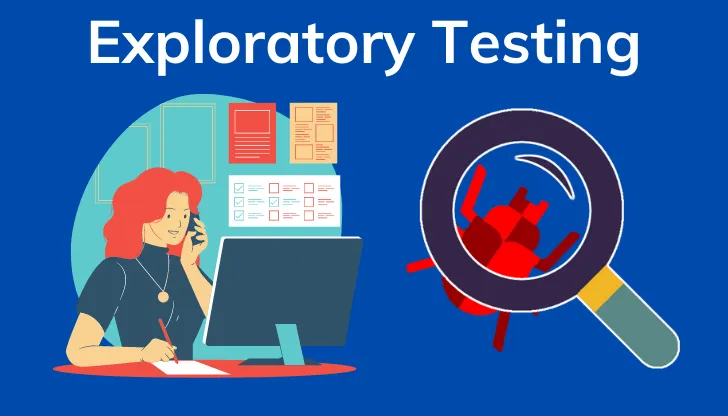In the realm of software testing, there’s a dynamic and intuitive approach that stands out for its ability to unveil hidden issues and provide valuable insights into the quality of a product—exploratory testing. Unlike scripted testing, which follows predefined test cases, exploratory testing is all about spontaneous exploration and experimentation. In this comprehensive blog, we’ll delve into the principles, benefits, techniques, and best practices of exploratory testing, exploring how it can uncover hidden software issues and contribute to the overall quality of a product.

What is Exploratory Testing?
Exploratory testing is a testing technique in which testers explore the software being tested without depending on predefined test cases. Instead of following a predetermined set of methods, testers rely on their intuition, domain expertise, and creativity to find bugs, usability concerns, and other unexpected behavior. This exploratory technique enables testers to adjust their testing strategy in real time, focusing on regions of the software that are most likely to have faults.
Benefits of Exploratory Testing
- Flexibility and Adaptability
- Exploratory testing offers flexibility and adaptability, allowing testers to adjust their approach based on emerging insights and observations. This agility enables testers to explore different paths, scenarios, and user interactions, uncovering issues that may not be captured by traditional scripted tests.
- Breadth and Depth of Coverage
- By promoting exploration and experimentation, exploratory testing can accomplish both breadth and depth of coverage. Testers can identify faults across multiple dimensions, such as functionality, usability, performance, and compatibility, resulting in a more comprehensive review of software quality.
- Early Bug Detection
- Exploratory testing is particularly effective at detecting defects early in the software development lifecycle. By identifying issues as they arise, testers can provide timely feedback to developers, enabling them to address issues before they escalate and become more costly to fix.
- User-Centric Perspective
- Exploratory testing encourages testers to take a user-centric approach, concentrating on how real-world users interact with the program. Testers can identify usability difficulties, workflow inefficiencies, and other user experience concerns by recreating real-world usage scenarios and exploring the product through the eyes of an end user.
- Creativity and Innovation
- Exploratory testing encourages testers’ creativity and inventiveness, allowing them to think outside the box and discover new ways to stress test the product. This creative research can lead to the discovery of novel edge cases, corner cases, and failure scenarios that would go undiscovered via typical testing methods.
Techniques and Best Practices
- Session-Based Testing
- Set up exploratory testing sessions with clear goals, time limitations, and reporting criteria. Testers can record their results and observations in real time, providing useful feedback to stakeholders and guiding future testing efforts.
- Mind Mapping
- Use mind mapping tools to visualize test concepts, investigate multiple testing paths, and pinpoint areas of attention. Mind maps can help testers organize their thoughts, prioritize testing activities, and track testing progress more effectively.
- Pair Testing
- During exploratory testing sessions, collaborate with other testers or team members to benefit from their different perspectives and thoughts. Pair testing promotes knowledge exchange, innovation, and the identification of blind spots or biases in the testing process.
- Bug Advocacy
- Advocate for the value of exploratory testing inside the organization, emphasizing its benefits and demonstrating its success in revealing hidden software flaws. Educate stakeholders on the benefits of exploratory testing and urge its implementation as part of the overall testing strategy.
- Continuous Learning and Improvement
- Encourage testers to continue learning and improving their exploratory testing abilities through training, workshops, and knowledge sharing sessions. Invest in tools, resources, and practices that facilitate exploratory testing, allowing testers to become more successful software explorers.
Conclusion
Exploratory testing is a valuable technique where testers find hidden defects, give feedback, and improve product quality. By using exploratory testing well, businesses can make high-quality software that meets user needs. As software gets more complex, exploratory testing stays important for testers to do their job well.
